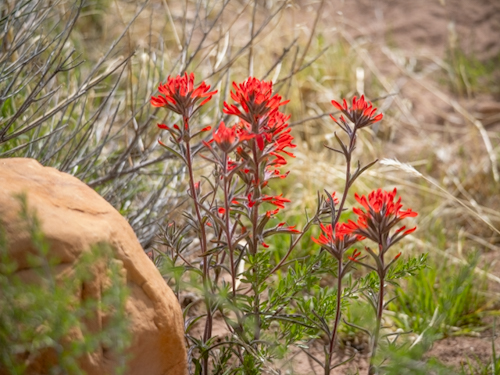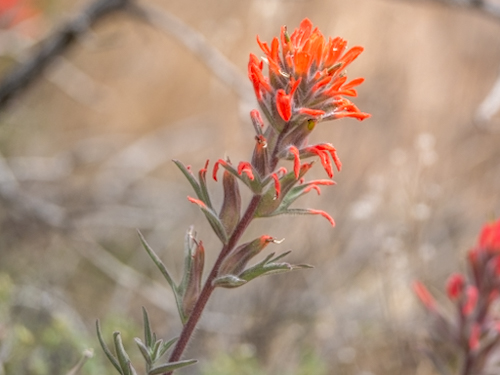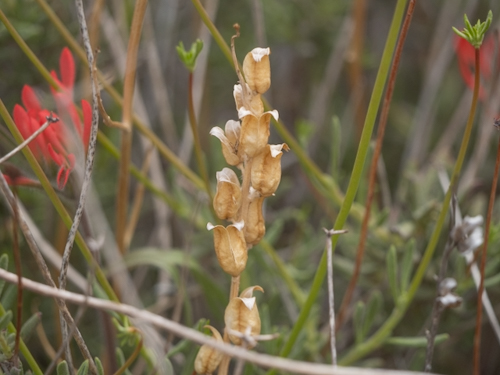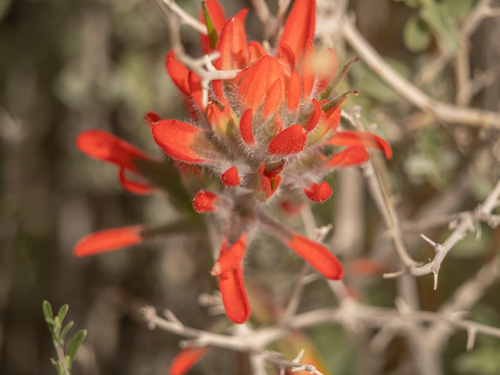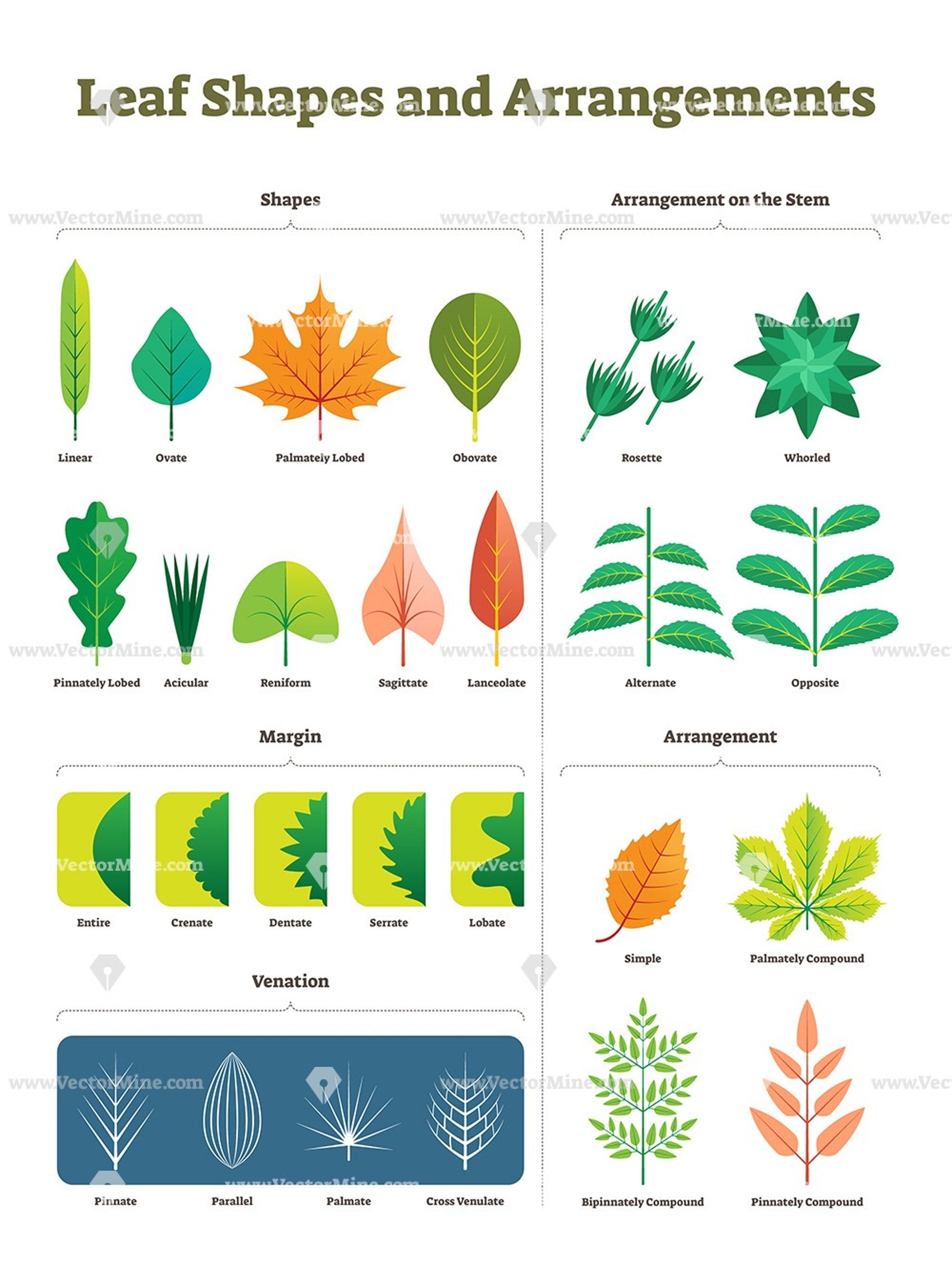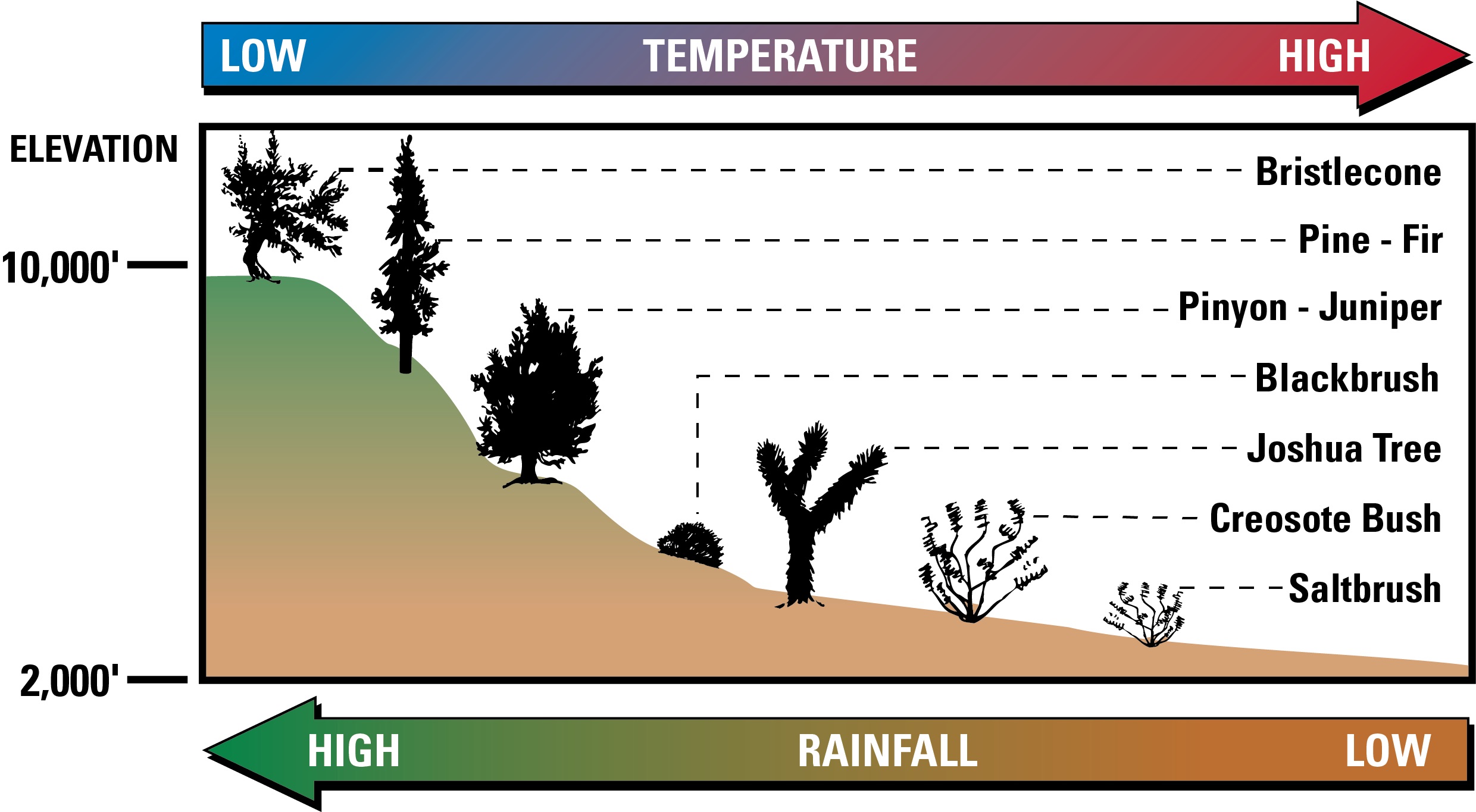Castilleja chromosa
Desert Paintbrush
The desert paintbrush has large, colorful inflorescences between 2.5 and 15 centimeters (1 and 6 in) long and 1.5 to 5.5 cm (0.6 to 2.2 in) wide. The inflorescence is covered in coarse hairs or covered in long soft hairs. Castilleja chromosa's vivid red color is not the flower color; it is the color of the modified leaves, the bracts. The flowers in Castilleja chromosa (as in all other Castilleja) are actually very inconspicuously narrow, green tubes that can be seen projecting outward. The bracts are often confused with the petals; the upper half of the bracts are orange or bright red, occasionally yellow, dull orange, or subdued pink. At their base they are more green or a muted purple, but they are never purple towards their ends. Each bract will usually be divided into three, five, or seven primary lobes; however, they may occasionally lack divisions or have the lobes further divided into smaller secondary lobes. The actual flowers are yellowish-green with more or less reddish edges, tubular, and unremarkable. can be linear, lanceolate, or oblanceolate (narrow like a grass blade), shaped like a spear head, or a reversed spear head with the wider part past the midpoint. Like the bracts, they are divided into lobes – most often three or five, but sometimes as many as seven or lacking divisions altogether. It is hemi-parasitic and while it can grow with various plants, it often prefers a mix of grasses and sedges, which are common in its natural habita
